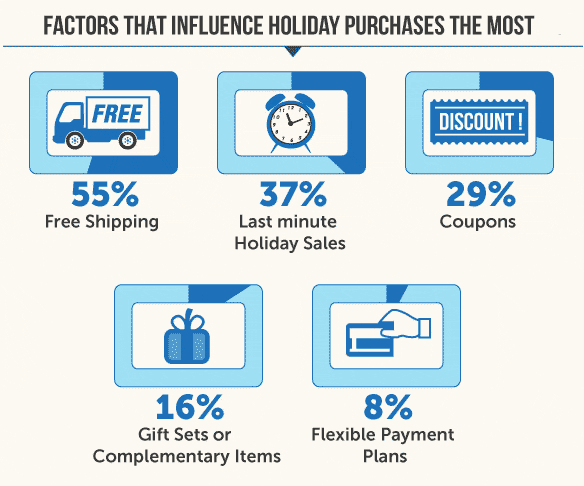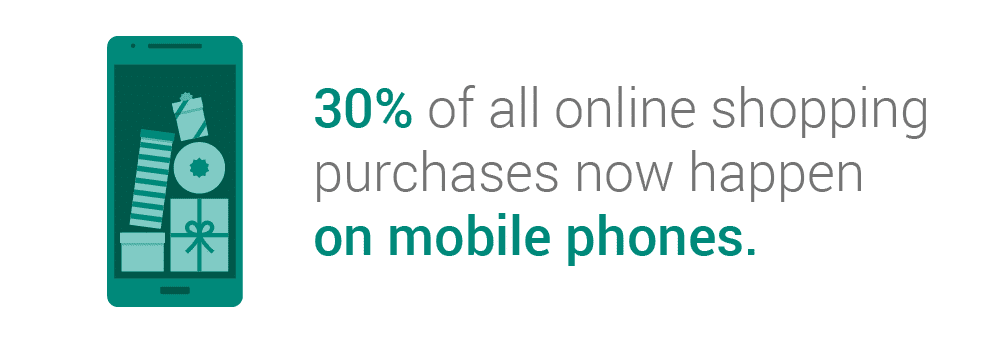It doesn’t matter now. Whether or not you’re ready for Black Friday and the holiday sales season, it’s upon us.
If you’ve been working all year to get ready for this year’s blitz, the overall retail sales predictions are mostly favorable. And even the negative stuff isn’t too bad.
- Inc.com quoted a Deloitte-authored sales forecast that calls for total retail sales of $965 billion this year, up about 4% from 2014. But the more pessimistic analysts will take that as somewhat negative news because it falls short of last year’ 5.2% increase in sales.
- Taking data from forecasts done exclusively for them, Reuters offers one of the gloomier predictions, saying that sales growth will be the slowest since 2009. But there will still be growth: 2.8% to 3.4% according to their predictions
- The National Retail Federation, the eternally optimistic standard bearer for the retail sector calls for “healthy sales gains” of 3.7% this season.
Fortunately, even if if you’ve done absolutely nothing to prepare for holiday sales, all’s not lost. Ecommerce and online shopping continues to grow at a healthier pace than overall retail sales and it gives all retailers the opportunity to capitalize on “last minute” promotional opportunities.
While Black Friday and Super Saturday have been traditional big sales days for bricks and mortar retailers, ecommerce seems to spawn more landmark sales days every year.
MarketingLand.com lists five important online shopping days that digital marketers should pay attention to, beyond Black Friday and Cyber Monday:
- Cyber Sunday, November 29th – Sales are increasing on the day before Cyber Monday as more retailers give shoppers an online preview of Cyber Monday deals.
- Green Monday, December 7th – Second only to Cyber Monday for single-day holiday sales totals, Green Monday is your chance to ensure that gifts will arrive before Christmas.
- Small Business Saturday, November 28th – While intended to boost sales at small, local bricks and mortar retailers, digital marketing tools like geo-targeting helps to boost sales online and offline.
- Free-Shipping Deadline Day – Whether it’s Green Monday or you want to take advantage of shorter shipping times, one promotion every online retailer can run is a countdown to the last day on which shoppers can have purchases delivered for free before Christmas.
- Last-Minute Shoppers – There’s always someone on your list that you miss until the very last minute. Digital gift cards are a great solution and retailers can promote them right up to … the very last minute.
“Black Friday isn’t Dead” – What Ecommerce Retailers Can Do This Season to Help Next Year’s Sales
When the NRF writes that “We know that Black Friday isn’t dead”, regardless of the context, it should make any retailer, ecommerce or bricks and mortar, stop and ponder.
What do they mean Black Friday isn’t dead? Who said anything about Black Friday’s demise? Black Friday is now an international retail sales sensation, with Canada, Brazil and UK retailers, among many others, promoting it heavily, even though it’s just a name in those markets, without a basis in the calendar.
But the truth is, after peaking at $59.1 billion in 2012, Black Friday sales have decreased steadily ever since. And they’re expected to sink below $50 billion this year – an over 20% total drop in just three years. All while overall retail sales and ecommerce sales have steadily increased in the same time period.

So, while claims that it’s dead are coming mainly from “click-bait” headlines, Black Friday is definitely changing.
And that change is largely due to online shopping and ecommerce trends.
This Holiday Season Look for Emerging Ecommerce Trends
If you do nothing else this holiday sales season, it is important to watch for emerging online shopping trends. Retail and shopping habits are evolving rapidly and staying ahead of the wave means keeping abreast with changes. And the waning of Black Friday as a monolithic high-retail-sales day is just one.
1. Why Black Friday Sales are Slipping – Digital marketing is the reason Black Friday has become a big sales day in markets where the day doesn’t actually exist. The splash of U.S. Black Friday promotions spilled over on the web and shoppers in other markets began demanding similar deals.
But if digital gave Black Friday an international appeal, digital is also reducing its prominence as an exceptional sales day. Online retailers don’t have to wait for any particular day to offer a deal. In the hyper competition for sales that began in 2008, ecommerce sites looked for any and every way to capture shoppers’ imaginations and sales.
This year, Best Buy, itself suffering some sales issues, began promoting holiday sales online on October 6th.
2. Smartphone Users Shopping in Micro-Moments – Google has identified an online holiday shopping trend trend that shows shoppers are forgoing Black Friday lineups and day-long mall marathons in favor shopping in micro-moments on their smartphones.
Google’s numbers show that 54% of all online holiday shoppers (browsers and buyers) say they plan to shop on their smartphones during spare moments throughout the day, like when they are in a lineup, or on the bus. And Google predicts this trend to be spread throughout the holiday season, not on any one day.
Google points to a 7% drop in the time spent in mobile sessions, coupled with a 64% increase in smartphone’s share of ecommerce purchases in the past year, as evidence of the trend.
3. Mobile’s Pull Will Affect Other Landmark Shopping Days – Black Friday won’t be the only victim of the “every day is a sales day” potential of mobile commerce. in 2014, Google noted a shift of prominent search spikes for “gifts and presents” from Black Friday and Cyber Monday to a more steady interest throughout the season.
What Do These Trends Mean for Your Ecommerce Sales: If you do not already have a mobile-optimized site, get one. If you are already mobile, optimize your site for loading speed and conversions. Start thinking about your digital marketing tactics, like email and paid advertising, in terms that might better suit smartphone shopping in micro-moments.
Theses are just the trends predicted for this year. Who knows what trends will emerge. But the more you pay attention to them, the more you’ll be able to optimize for them and take advantage in the new year.






